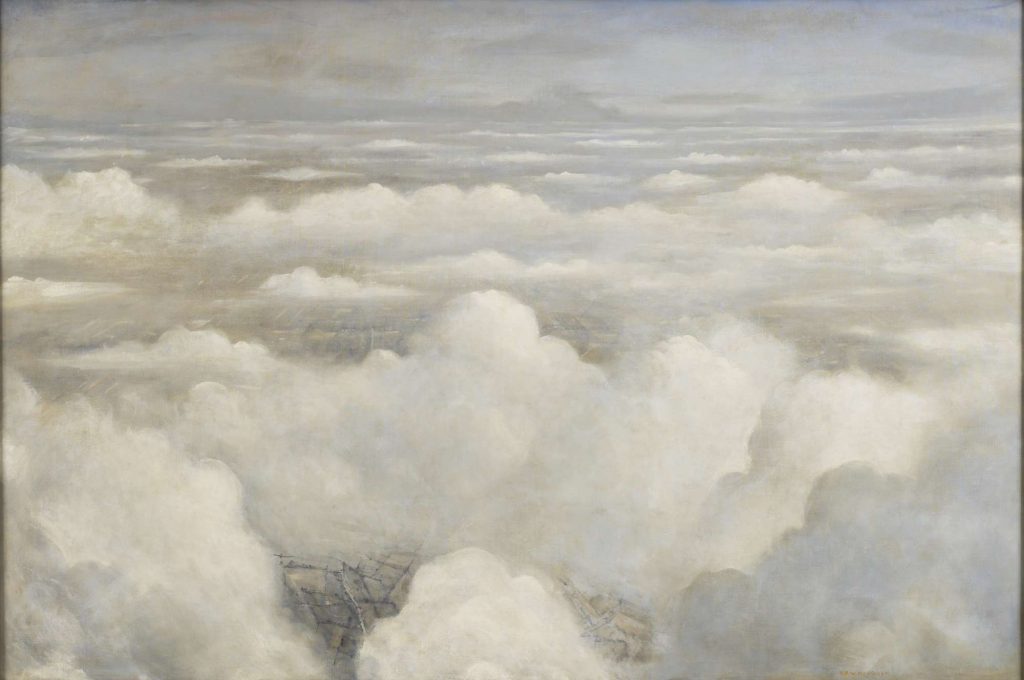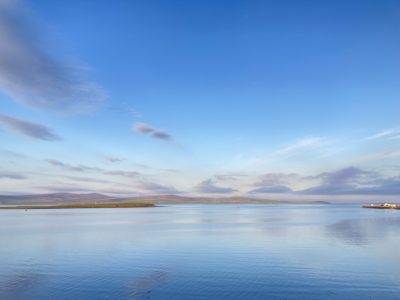A closer look: Battlefields of Britain
During the Second World War, the funding and provision of art for government buildings and embassies was paused. A small number of works were lost, damaged or destroyed as a result of the hostilities, with one exception.

Christopher Richard Wynne Nevinson, Battlefields of Britain, 1942
A dream-like cloudscape shows distant glimpses of green countryside, as this painting imagines the view from the cockpit window of a fighter plane. Painted by Nevinson, a well-known war artist of World War I, it is based on a poem written by John Gillepsie Magee, a young American pilot and poet, killed in active service in Britain on 11 December 1941. Magee’s sonnet ‘High Flight’ featured in the British press, inspiring Nevinson who described how he ‘… tried to put his thoughts into my picture’.
Up, up the long, delirious burning blue
I’ve topped the wind-swept heights with easy grace
Where never lark, or ever eagle flew –
And, while with silent, lifting mind I’ve trod
The high untrespassed sanctity of space,
Put out my hand, and touched the face of God.
In 1942, Nevinson donated the work to Winston Churchill who responded, ‘I accept your gift with much pleasure but I think that such a picture should not be retained as my private property but should rather become a public possession of the British Nation.’
For nearly 80 years, Battlefields of Britain has been viewed by hundreds of staff and visitors at 10 Downing Street, at the Ministry of Defence and today, at the Department for Business and Trade. It has also delighted visitors to temporary exhibitions in London, Birmingham, Compton Verney and Belfast.


